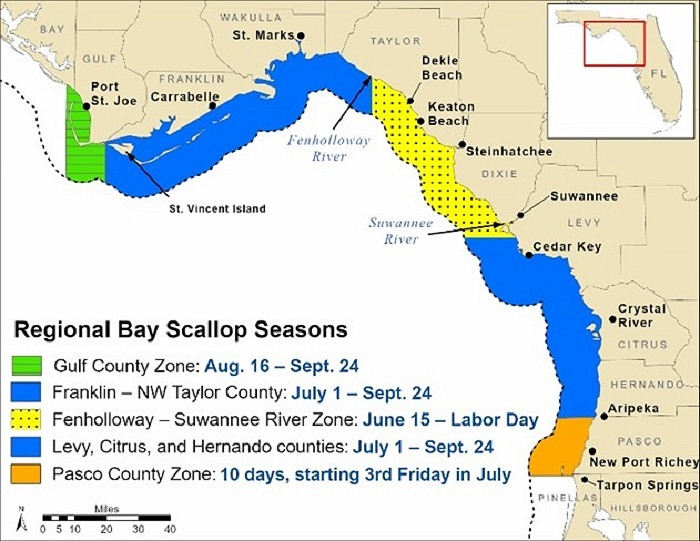“Our added winter moisture and active calling period led to a very long nesting and hatching season, starting in late April and extending into early summer, with chicks hatching as late as early July,” O’Dell said. “From a population standpoint, we are out of a deficit for the first time since 2001-2002. Quail are starting to pop up in places they haven’t been seen in a while.
“If you’ve never had the chance to experience what Arizona quail hunting built its name on, then this would be the year to get out and enjoy it.”
Meanwhile, hunters should note that the season for Mearns’ quail doesn’t begin until Dec. 4. It’s summer rainfall that plays a key role in nesting success and population numbers of this species. After a spotty and relatively weak monsoon across southern Arizona, these birds are likely to be abundant only in pockets that received sufficient precipitation this summer.
A valid Arizona hunting or combination hunt and fish license is required for all hunters 10 and older. Those hunters under 10 must either have a valid hunting or combination hunt and fish license, or be accompanied by an adult who possesses a valid hunting or combination hunt and fish license. Licenses can be purchased online or at license dealers statewide. A youth combination hunt and fish license (ages 10 to 17) is $5.
The general bag limit is 15 quail per day in the aggregate, of which no more than eight may be Mearns’ quail (when the Mearns’ season opens Dec. 4). The general possession limit is 45 quail in the aggregate after opening day, of which no more than 15 Gambel’s, scaled or California quail in the aggregate may be taken in any one day. After the opening of the Mearns’ season, the 45-quail possession limit may include 24 Mearns’ quail, of which no more than eight may be taken in any one day.
More quail-hunting information can be found on the department’s website at https://www.azgfd.com/Hunting/. Another resource for both new and experienced hunters alike is “An Introduction to Hunting Arizona’s Small Game.” Written by Randall D. Babb, the 196-page, full-color book covers where and how to hunt small game birds (like quail), squirrels, rabbits, ducks and geese. It also includes how to prepare and cook your harvest, with illustrations and recipes. The book can be ordered for $16.95 at www.azgfd.gov/publications.
Finally, hunters should check out O’Dell’s techniques for field-dressing quail at https://www.youtube.com/watch?v=3gRwZAcWzzk.
####
Publishers Notes: OUT OF STATE HUNTERS, FISHERMEN & OUTDOOR ENTHUSIASTS; Due to the Covid 19 pandemic, there could be limitations for OUT of STATE hunters, fishermen and other outdoor enthusiasts to include a 14-day quarantine requirement or negative COVID-19 testing alternative. Please check with the State's Department of Natural Resources BEFORE you travel or apply for the 2020 Fall Hunts.
Disclaimer: The views expressed on this site are that of the authors and not necessarily that of TBC Press
Florida 2021 Bay Scallop Season Opens between the Fenholloway & Suwannee Rivers
Submitted by: TBC Press
Posted on: 06/17/21
The Backcountry Press
The country's premier daily HUNTING, FISHING & OUTDOOR news in the USA and around the globe. Read whats happening in your neck of the woods & beyond.
© 2020 TBC Press - All Rights Reserved Website Design by:
News # 14410
The Florida 2021 recreational bay scallop season from the Fenholloway River through the Suwannee River opened June 15 and will remain open through Labor Day (Sept. 6, 2021). This includes all state waters in Dixie County and a portion of Taylor County and includes the towns of Keaton Beach and Steinhatchee.
The daily bag limit from June 15-30 in this area is one gallon of whole bay scallops in the shell or one cup shucked per person with a maximum of five gallons whole or two pints (four cups) shucked bay scallop meat per vessel.
From July 1 through Labor Day in this area, and for the duration of the open season in other areas, regular bag and vessel limits apply. Regular season limits are two gallons of whole bay scallops in the shell or 1 pint of bay scallop meat per person, with a maximum of 10 gallons of whole bay scallops in the shell or 1/2 gallon (four pints) shucked bay scallop meat per vessel. Throughout the season and region-wide, vessel limits do not allow an individual to exceed their personal bag limit.
Additional bay scallop season dates are as follows:
St. Joseph Bay/Gulf County: Aug. 16 through Sept. 24. This region includes all state waters from the Mexico Beach Canal in Bay County to the westernmost point of St. Vincent Island in Franklin County.
Franklin County through northwestern Taylor County (including Carrabelle, Lanark and St. Marks): July 1 through Sept. 24. This region includes all state waters from the westernmost point of St. Vincent Island in Franklin County to the mouth of the Fenholloway River in Taylor County.
Levy, Citrus and Hernando counties (including Cedar Key, Crystal River and Homosassa): July 1 through Sept. 24. This region includes all state waters from the mouth of the Suwannee River in Levy County to the Hernando – Pasco county line.
Pasco County: Open for 10 days starting the third Friday in July (July 16-25, 2021). This region includes all state waters south of the Hernando – Pasco county line and north of the Anclote Key Lighthouse, including all waters of the Anclote River.
Other regulations
Scallops may be collected by hand or with a landing or dip net.
There is no commercial harvest allowed for bay scallops in Florida.
Direct and continuous transit of legally harvested bay scallops is allowed through closed areas. Boaters may not stop their vessels in waters that are closed to harvest and must proceed directly to the dock or ramp to land scallops in a closed area.
For information on bay scallop regulations, visit MyFWC.com/Marine and click on “Recreational Regulations” and “Bay Scallops” under the “Crabs, Lobster and other Shellfish” tab.
####













